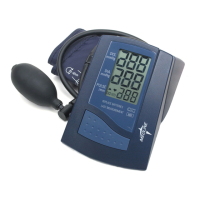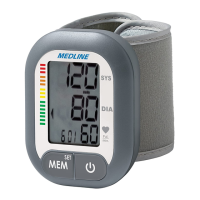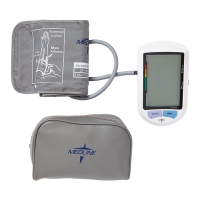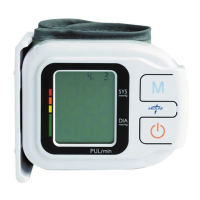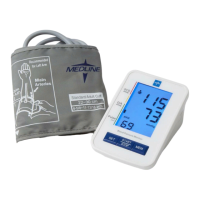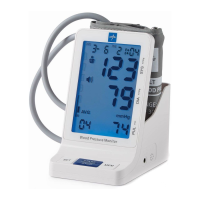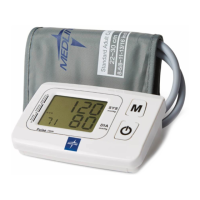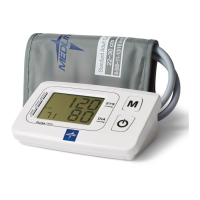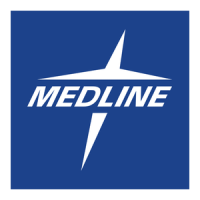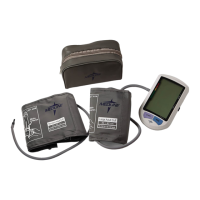10. Especificaciones técnicas
Peso: 265 g (pilas incluidas)
Dimensiones: 131 x 174 x 73 mm
Temperatura de almacenamiento: –5 a +50°C
Humedad: 15 a 85% de humedad relativa como máximo
Temperatura de funcionamiento: 10 a 40°C
Pantalla: Pantalla LCD (display de cristal líquido)
Método de medición: oscilométrico
Sensor de presión: capacitivo
Alcance de medición:
SYS/DIA: 30 a 280 mmHg
pulso: 40 a 200 por minuto
Límites de indicación de la presión
de la muñequera: 0–299 mmHg
Memoria: almacenamiento automático del último valor
medido
Resolución de las medidas: 1 mmHg
Exactitud:
presión: ± 3 mmHg
pulso: ± 5 % de la lectura
Fuente de Energía: 4 celulas secas (pilas) UM-3, tamaño AA, 1.5 V
Accesorios: brazalete modelo MDS9872 para brazos de
circunferencia 22–30 cm
brazalete modelo MDS9873 para brazos de
circunferencia 30–38 cm
* A reserva de modificaciones técnicas.
30
